We were already looking forward to Siggraph and here we are in the week before getting releases that make us even more excited to be covering the show. Pixel Farm is using words in the press release that follows that get our full attention “brand new architecture”, “node-based flowgraph architecture” plus they include a quote from our longtime fxphd 3D tracking guru and professor Victore Wolansky:
“The tracking market is long overdue for an overhaul, and this is a game-changing advance from The Pixel Farm. I think they’ve just re-invented 3D tracking,” said Victor Wolansky, VFX Artist, E3post, and 3D Tracking Professor at fxphd. “New products emanating from these developments will be a ‘must-have’ for anyone involved in the visual effects business.”
UPDATE July 28, 2010: More detailed press release and some images are after the read more and you can bet we’ll be checking this out at Siggraph.
Press Release received July 28, 2010:
SIGGRAPH, LA, 27-29 July, 2010 – The Pixel Farm Ltd (www.thepixelfarm.co.uk), developer of innovative image-processing systems for VFX, DI and restoration, today unveiled PFMatchit, a groundbreaking 2D/3D camera-tracking/matchmoving software package, aggressively priced for every desktop. The new product is announced as part of wider realignment of the company’s core VFX product range, including the renowned PFTrack.
PFMatchit, released in response to customer demand for a lower entry point to The Pixel Farm’s technology, is the first product to harness the company’s new 64-bit, node-based flowgraph architecture. This approach dramatically improves the core processes involved in camera tracking, one of the most critical aspects of successful VFX creation.
The new architecture gives users a logical, visual overview of tracking workflows, and a procedural, non-linear environment in which to work. Digital artists have full control over every aspect of each individual operation within a workflow, and can experiment non-destructively with different approaches to a shot to achieve the best possible result. Moreover, the new architecture facilitates shared data manipulation, greater flexibility and ultimately richer creative options for the digital artist.
Optimised as a GPU-accelerated, 64-bit application, and running natively on OSX, Windows and Linux, the new architecture is underpinned with metadata management, fully-integrated Python scripting, workflow customisation and a host of other features, such as in-built rolling shutter correction and image-distortion tools.
Built on this powerful foundation, PFMatchit delivers a cutting-edge 2D and 3D tracking toolset. PFMatchit can solve an unlimited number of camera and object motions per shot, with each contributing to another, and then export the data as a single file. It can also solve for lens distortion, when no grid or alignment data exist, and save this lens profile as a preset for automatic use within the workflow.
The Edit Camera node provides manual controls enabling the user to animate the position of a camera in 3D space over time. It allows previous camera solves to be edited, and can generate hints to influence how a 3D camera moves, with the result that shots can be solved that were previously considered untrackable.
New lens distortion tools, in combination with in-built rolling shutter correction, support for RED RAW without conversion, plus stereo review tools, keep matchmoving artists within a single environment, eliminating the need to use any other third-party applications.
“The Pixel Farm has created easily the most sophisticated 3D tracking software we have ever used,” said Timor Kardum, CEO of OMStudios in Berlin. “The combined power of features in PFMatchit, like optical flow for 3D tracking, Python scripting, RED RAW support and the ingenious Edit Camera node will revolutionise matchmoving.”
PF Matchit addresses the underlying market need for a low-cost matchmoving and 3D camera-tracking product, and complements The Pixel Farm’s popular PFTrack, which provides additional features such as geometry tracking, image-based modelling and Z-depth extraction. PFMatchit, which is set to ship at the end of August, will be priced at $700 USD, with PFTrack now available at an entry point of $3,300 USD.
“Our development team has excelled in creating a product architecture that resets the boundaries of the matchmoving and tracking industry,” said Michael Lancaster, Managing Director at The Pixel Farm. “We are confident that we have developed a technology that reflects the constant industry need to improve productivity. With the launch of PFMatchit, and new pricing for PFTrack, we are giving the global post production community attractive new entry points to the vital craft of matchmoving and camera-tacking.”
Original Press Release:
The Pixel Farm Ltd (www.thepixelfarm.co.uk), developer of innovative image-processing systems for VFX, DI and restoration, will unveil a groundbreaking advance in tracking software for digital visual effects at SIGGRAPH 2010 (Booth #313). Employing a brand new architecture, the technology dramatically improves the fundamental processes involved in camera tracking, one of the most important areas of successful VFX creation, ushering in unprecedented levels of flexibility, control, accuracy and speed.
The new, node-based flowgraph architecture, developed by the company’s renowned R&D team, is an industry-first in camera tracking and match moving software. Easy to learn and operate, it provides a logical visual overview of tracking workflows, and gives digital artists a procedural, non-linear environment in which to experiment non-destructively with different approaches to a shot to achieve the best result possible. In many cases this enables shots to be tackled, which were previously considered untrackable.
Optimised as a 64-bit application, and running natively on OSX, Windows and Linux, the new architecture is underpinned with metadata management, fully-integrated Python scripting, workflow customisation and a host of other features, such as in-built rolling shutter correction and image-distortion tools.
“The Pixel Farm is going to catch a lot of people by surprise. This advance represents a genuine paradigm shift in both the science and technique of matchmoving”, said Daryl Shail of Monster Matchmoves in Toronto. “The new architecture vastly improves the entire process of camera tracking. It’s easy to learn, fast, and provides extraordinary levels of control, while allowing artists to experiment and refine the track with ease, and deliver the most accurate data possible.”
“The tracking market is long overdue for an overhaul, and this is a game-changing advance from The Pixel Farm. I think they’ve just re-invented 3D tracking,” said Victor Wolansky, VFX Artist, E3post, and 3D Tracking Professor at fxphd. “New products emanating from these developments will be a ‘must-have’ for anyone involved in the visual effects business.”
The new flowgraph workflow, unique in the camera tracking/match-moving market, provides instant familiarity for digital artists who use node-based composting and effects software, and delivers the significant advantage of enabling full control over every aspect of each individual operation.
The use of 64-bit processing across all platforms allows digital artists to work on the highest resolution clips, providing greater accuracy with quicker turnaround times. With tightly integrated metadata management at the core of the application, any adjustments are constantly written to the project file making any data available to other parts of the application via Python scripting and macros. This capability provides for streamlined integration of The Pixel Farm technology into any post-production pipeline, along with the automation of routines and processes, and resource management for post-production supervisors and producers.
“While developing PFTrack we learnt a lot about match moving, including the opportunities that closely-related technologies could feed into the VFX pipeline. We created this new architecture to be able to extend the creative possibilities further,” said Michael Lancaster, Managing Director at The Pixel Farm. “We are confident we have developed a technology that reflects the constant industry need to improve productivity and ease of use with the same market leading results, yet expands on the groundbreaking innovations of PFTrack”
The Pixel Farm will introduce its first offering based on this new architecture, in the form a new low-cost matchmoving application at SIGGRAPH 2010 (Booth #313). Visitors to the booth will be able to experience a number of practical demonstrations covering the benefits of the new architecture, and the considerable possibilities it provides. In addition, a technical workshop will be run twice daily illustrating how customers can customise the application using Python Scripting and macros to streamline their effects pipelines.
Every day of the show, all visitors to the stand will be automatically entered into a free draw to win a complete tracking station – consisting of the new matchmoving application plus a state-of-the-art GPU accelerated workstation, supplied by Aeon Computing.

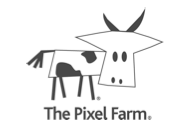
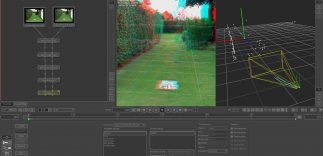
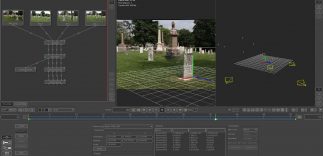
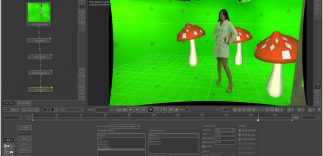
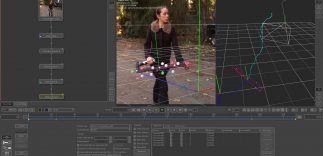
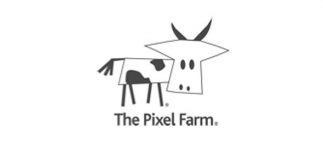
How strange! I was just listening to an old fxguide podcast this week which featured these guys and I wondered what they were up to!
I’m in heaven! looking forward to it!
very promising. looking forward to it!
Looking forward too..!!
Wow amazing!!!!!!!!!!!!!!!!!!11
looking Forward tooooooooooooooo
Cool!!
I’ll have my eyes and ears open, regarding this.
“…will be a must-have” will still be based on price ($4,400 is just too much for small shops), but the statement “in the form a new low-cost matchmoving application” sounds promising. 🙂
Well unless they come up with some way to do easy face tracking its just fancy words i mean camera tracking its really easy these days.
Nodes..fine another way to do the same ,not too much impressive
PFTrack already offers impressive face tracking. It has done for years!
About time since their engine is so slow and solving so cumbersome that we already switched to Syntheyes.
Great!!! I hope it delivers and that fxphd creates a course on this new software/technology!
Pingback: SIGGRAPH 2010: What’s Coming Down The Pipeline | Fuel Your Motionography
sounds like great marketing.
Very curious to get more details on this… Motion tracking become one of the most common task in a VFX shot and the solutions are still bit technical and not so artist friendly. I am mre keen on seeing how they are dealing with object tracking along with camera track.
Cautiously optimistic. The only thing that ever kills me with 3d tracks is the lack of trackable features or parallax. I don’t know that node-basing it will do much, but again: cautiously optimistic.
I hope that they offer a demo – I’m very keen to play with this – what ever it is.
but I am sure that they will try to make sure the tracking is really a game-changer.
Unless it is just some extra 3D tracking that is riding on the back of all the 3D releases out there.
Starting to feel a little trolled here without further information after the first day of SIGGRAPH. Does this new tracker have a name? A price? A feature list? A ship date?
Just got the press release this morning, I have updated the story above complete with images. We are interviewing Pixel Farm at the show and will have more later.
Thanks, Jeff!
What’s it missing compared to the big brother PFTrack?
I think object tracking, z-depth extraction and some other things.
Brilliant. Instead of fixing all the problems with the current version. They’ve just changed the look so it’s node based! This is typical PF.
I remember when PF track came out they had a really great tracking product but with an interface that made it unusable. If you wanted to change the focal length you had to start again from scratch!!! They always asked for feedback but refused to change their product.
I bet you still can’t change the size of the transform handle!
I just played with the demo for a few hours, and it seems to work pretty well. I don’t have a ton of experience with Syntheyes, but I really like the node based workflow of PF MatchIT. Anyone used both, and can tell me where to spend my $700?